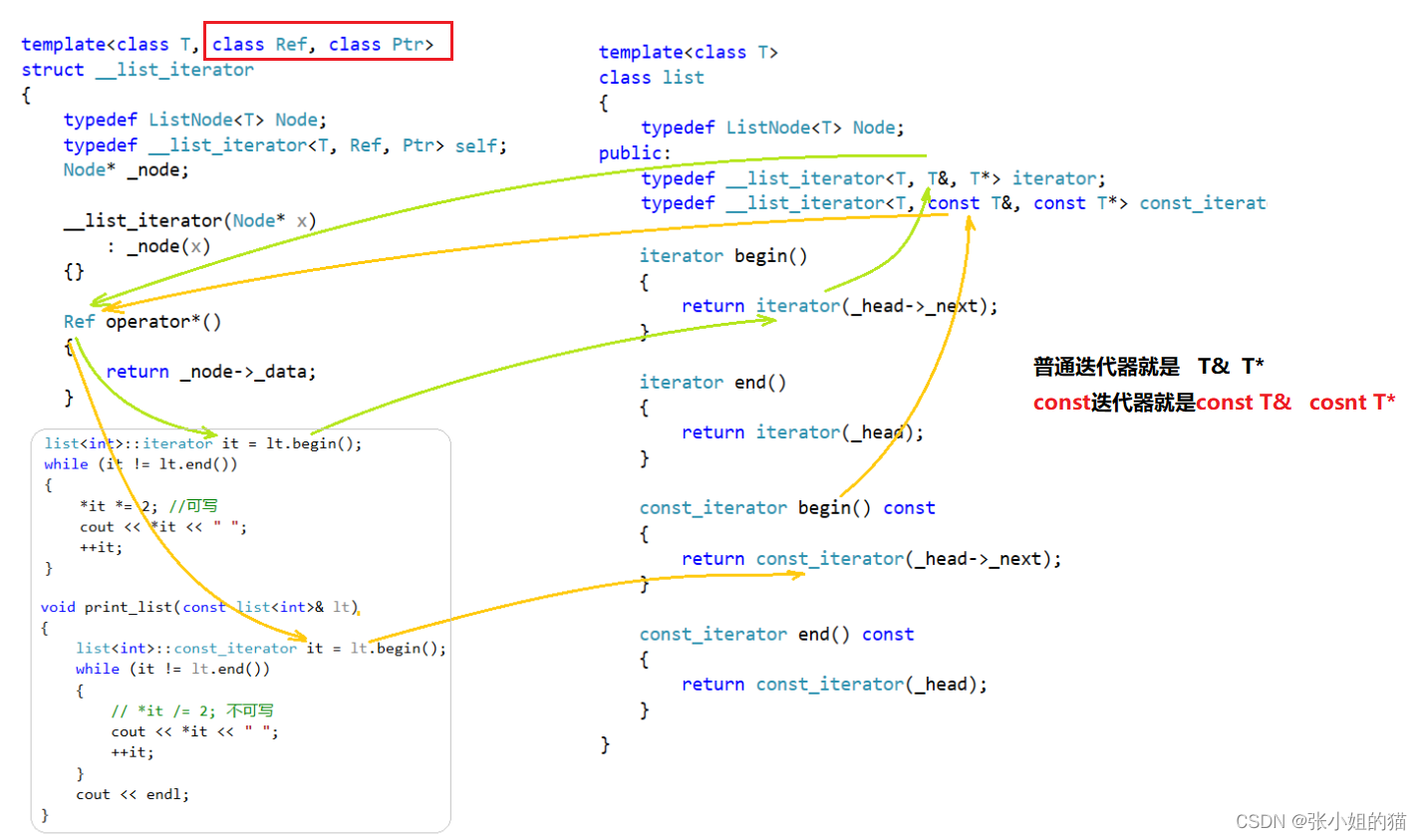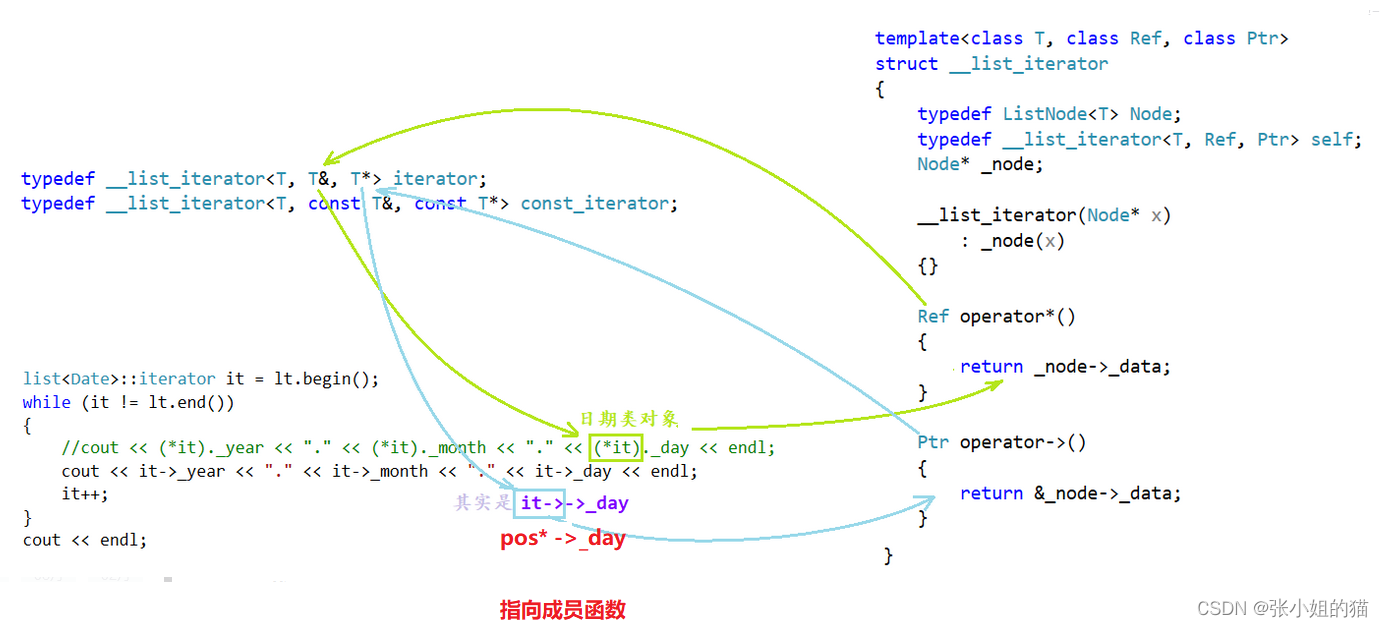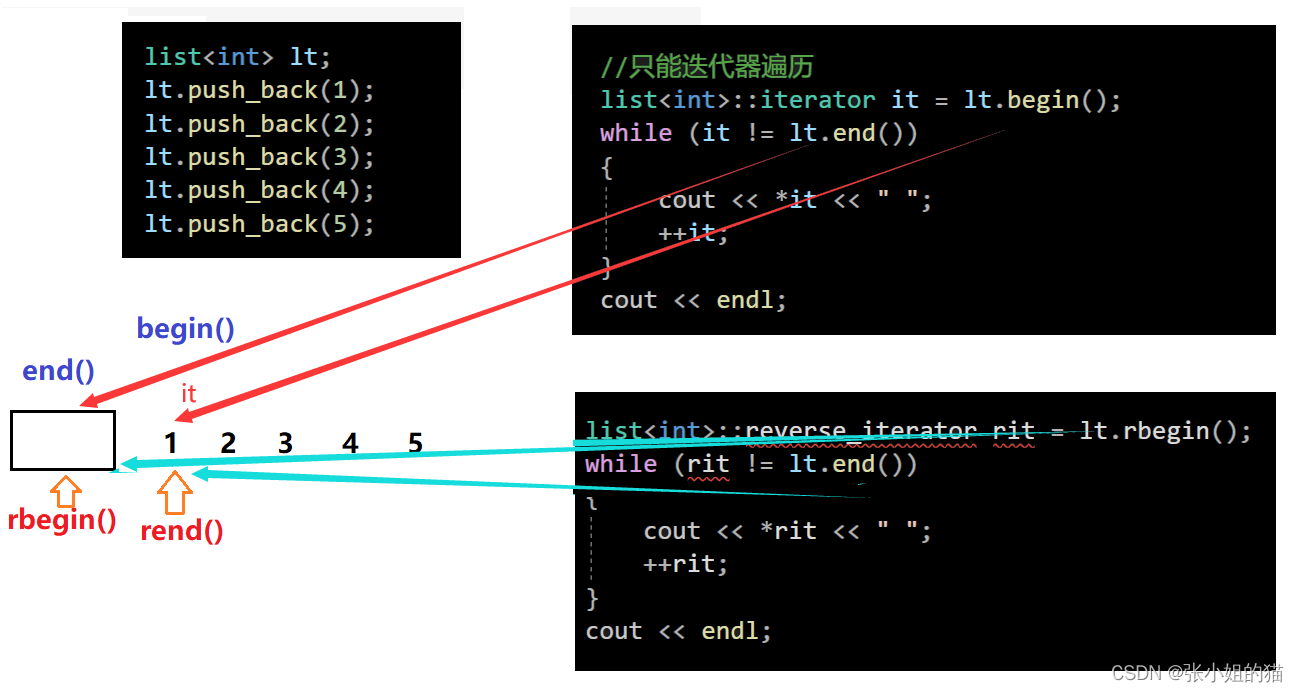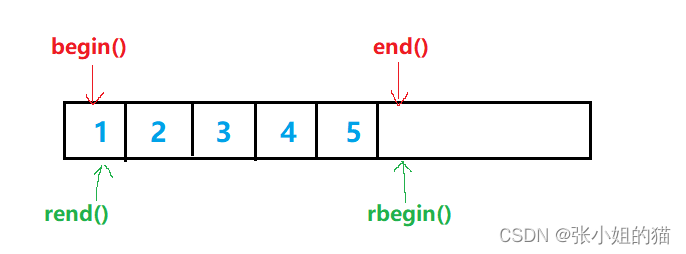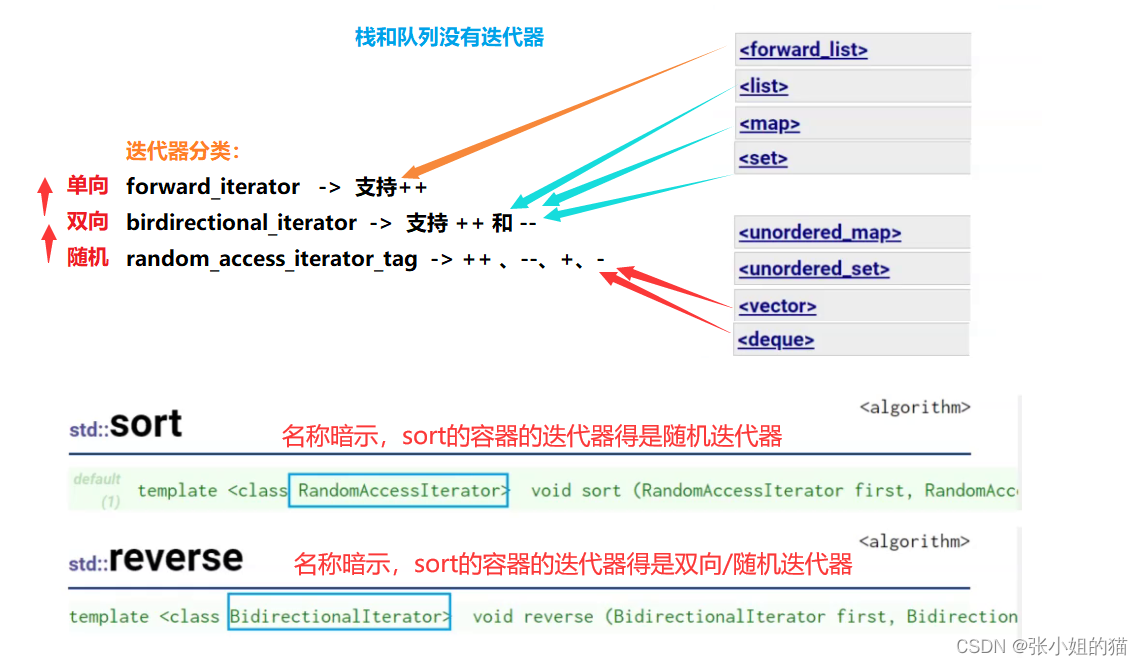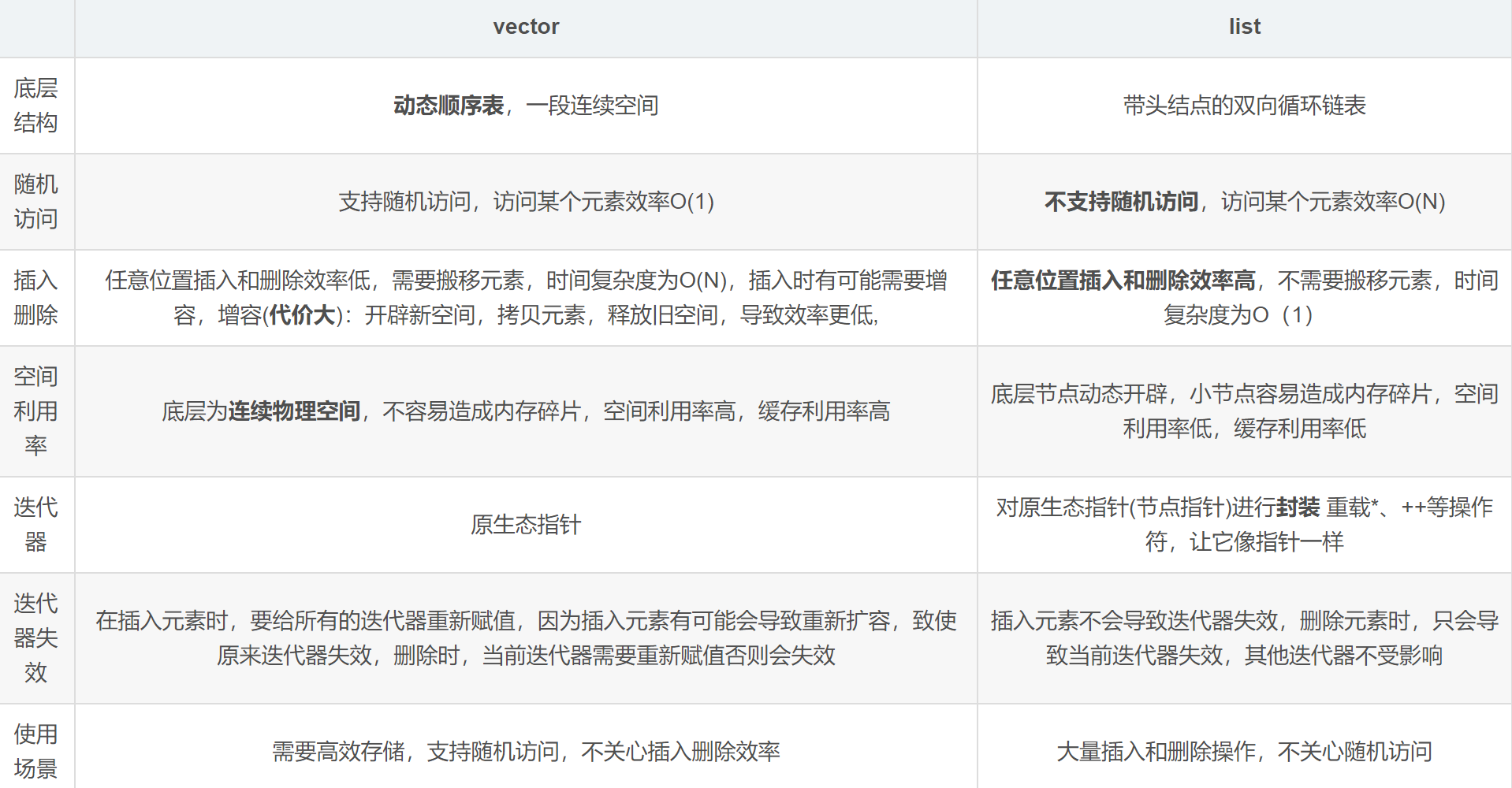一. list大框架
list_node节点
namespace ljj { template<class T> class list_node { T _data; list_node<T>* _next; list_node<T>* _prev; //构造 list_node(const T& x = T())//全缺省 ~ 构造匿名对象 :data(x) ,_next(nullptr) ,_prev(nullptr) {} }; template<class T> class list { typedef list_node<T> Node; public: list() { _head = new Node; _head->_next = _head; _head->_prev = _head; } private: Node* _head; };
为了测试,我们迅速实现一个尾插吧,忘记的话可以画图(我画的有点丑)
//尾插 void push_back(const T& x) { Node* namespace ljj { template<class T> class list_node { T _data; list_node<T>* _next; list_node<T>* _prev; //构造 list_node(const T& x = T())//全缺省 ~ 构造匿名对象 :data(x) ,_next(nullptr) ,_prev(nullptr) {} }; template<class T> class list { typedef list_node<T> Node; public: list() { _head = new Node; _head->_next = _head; _head->_prev = _head; } private: Node* _head; };tail = _head->_prev; Node* newnode = new Node(x); //_head tail newnode tail->_next = newnode; newnode->_prev = tail; newnode->_next = _head; _head->_prev = newnode; }
二 .迭代器(狠重要)
🌍相比vector和string那些连续的物理空间,原生指针就是天生的迭代器,但对于list在空间上不连续的数据结构,解引用不能取到数据,++也不能到不了下一个节点
为此,对于链表的迭代器,我们用自定义类型对结点的指针进行封装,底层仍然是结点的指针。C++的自定义类型支持运算符重载,原本的运算符编程变成函数调用,这样就可以实现像内置类型一样使用运算符,这就是c++厉害的地方 up!
构造迭代器,仅需要一个节点就可以构造了
template<class T> struct __list_iterator { typedef ListNode<T> Node; typedef __list_iterator<T,Ref,Ptr> Self; Node* _node;//节点指针 __list_iterator(Node* x)//提供一个节点构造 : _node(x) {} };
迭代器的拷贝构造&赋值重载都不需要我们自己实现,因为我们要的就是浅拷贝,用编译器默认生成的即可
灵魂发问:迭代器需不需要析构函数,把节点释放掉?不要,释放节点归链表管,迭代器是借助结点指针来访问修改链表的,不属于迭代器管,好比人家借东西给你用,你却把人家东西故意弄丢了,很可笑
🌍iterator & const_iterator
我们在list中进行typedef,这样所有容器迭代器名字统一都是iterator
我们知道const迭代器和普通迭代器的唯一区别就是:普通迭代器返回的是T&,可读可写;const迭代器返回的是const T&,可读不可写。我们当然可以再继续封装一个类(此处不能重载,因为返回值不同),__const_list_iterator类,但是会造成代码冗余,看了源码我们发现:传入模板参数解决了这个问题,这也是迭代器的精华
🎨重载 *
*it 就是要取迭代器指向的数据,并且返回这个数据的引用,可以修改
//*it -> it.opeartor*() 可读可写 T& operator*() { return _node->_data; }
🎨重载 ->
如果T不是int等内置类型,而是自定义类型,我们访问其中的成员,需要重载->
struct pos { int _a1; int _a2; pos(int a1 = 0 , int a2 = 0) :_a1(a1) ,_a2(a2) {} }; void test_list2() { int x = 10; int* p1 = &x; cout << *p1 << endl; pos aa; pos* p2 = &aa; p2->_a1; p2->_a2;//找结构体成员 list<pos> lt; lt.push_back(pos(10, 20)); lt.push_back(pos(20, 50)); list<pos>::iterator it = lt.begin(); while (it != lt.end()) { //cout << *it << endl; // 错误示范,请勿模仿 // 因为Date是自定义类型,需要重载<<来打印,但要就是不给你提供呢,下面这样是可以的,很别扭 //cout << (*it)._a1 << ":" << (*it)._a2 << endl; cout << it->_a1 << ":" << it->_a2 << endl; ++it; } cout<< endl; } }
迭代器it是去模仿指针的行为。在list中,如果节点中是int这样的内置类型,解引用(本质调用函数)访问数据即可;而像这里一个结构体的指针,我们固然可以(*it)拿到日期类对象.访问成员,但我们更希望能->访问成员,因此我们还需要重载->
// -> T* operator->() { return &(operator*());//调用了operator*() -> &(_node->data) }
这里本来应该是it->->_year,但是这样写运算符可读性太差了,所以编译器进行了优化,省略了一个->,对于cosnt对象,就是返回const指针,也就是添加了ptr参数的原因
🎨++ / – 和 == / !=
此处比较简单,直接上代码了
// ++it 返回值还是迭代器 日期类++返回的是日期类 iterator& operator++() { _node = _node->_next; return *this; } // it++ iterator& operator++(int) { iterator tmp(*this); _node = _node->_next; return tmp; } //--it iterator& operator--() { _node = _node->_prev; return *this; } // it-- iterator& operator--(int) { iterator tmp(*this); _node = _node->_prev; return tmp; }
🌍反向迭代器(迭代器适配器)
反向迭代器就是对正向迭代器的封装,这样它可以是任意容器的反向迭代器。
二者的不同之处:++调的是正向迭代器的–;–调的是正向迭代器的++
源码中为了对称的设计,使正向迭代器&反向迭代器的开始和结束保持对称,解引用*取前一个位置(我的开始就是你的结束)
为啥要这样子对称设计呢?直接解引用当前位置(哨兵位)的值,可能是随机值,出错
对于vector的反向迭代器,如果是我们预想的那样(解引用取的是当前位置),会有越界访问问题
为了获取数据类型T,我们还需要增加两个类模板参数Ref、Ptr,同时也可以区分普通参数与const参数。源码中不带这两个参数,是通过迭代器萃取技术实现的(难难难)
namespace ljj { //复用, 迭代器适配器 给list就出list的反向迭代 template<class Iterator, class Ref, class Ptr> struct __reverse_iterator { Iterator _cur; typedef __reverse_iterator<Iterator, Ref, Ptr> RIterator; __reverse_iterator(iterator it) :_cur(it) {} RIterator operator++() { --_cur; return *this; } RIterator operator++(int) { RIterator(tmp); --_cur; return tmp; } RIterator operator--() { ++_cur; return *this; } RIterator operator--(int) { RIterator(tmp); ++_cur; return tmp; } Ref operator*() { Iterator tmp = _cur; return *(--tmp);//解引用上一个位置 } Ptr operator->() { //return _cur.operator->(); return &(operator*()); } bool operator!=(const RIterator& it) { return _cur != it._cur; } bool operator==(const RIterator& it) { return _cur == it._cur; } }; }
反向迭代器:迭代器适配器,可以适配支持符合的反向迭代器
三. 增删查改
⚡insert & erase
💦insert
插入的位置是pos的上一个
返回值是newnode位置的迭代器
list的insert会导致迭代器失效吗?我们知道vector中迭代器失效的原因:扩容导致的野指针;pos意义改变,显然这里都不符合,所以不会发生
iterator insert(iterator pos, const T& x) { Node* cur = pos._node; Node* prev = cur->_prev; Node* newnode = new Node(x); //prev newnode cur prev->_next = newnode; newnode->_prev = prev; newnode->_next = cur; cur->_prev = newnode; return iterator(newnode);//构造迭代器返回 }
💦erase
注意哨兵位的头结点不能删
返回值是删除位置的下一个数据的迭代器
erase后迭代器必定失效,节点都被干掉了,pos你说指向哪里?
//删除 iterator erase(iterator pos) { assert(pos != ens());//哨兵位头结点不能删 Node* cur = pos._node; Node* prev = cur->_prev; Node* next = cur->_next; //prev cur next prev->_next = next; next->_prev = prev; delete cur; return iterator(next); }
⚡push_back & push_front
注意插入位置
//尾插 void push_back(const T& x) { insert(end(), x); } //头插 void push_front(const T& x) { insert(begin(), x); }
⚡pop_back & pop_front
也是要注意删除的位置
//尾删 void pop_back() { erase(--end()); } //头删 void pop_front() { erase(begin()); }
四. list的默认成员函数
🌈构造
✨无参构造
list() { _head = new Node; _head->_prev = _head; _head->_next = _head; }
✨迭代器区间构造
//迭代器区间构造 template <class InputIterator> list(InputIterator first, InputIterator last) { while (first != last) { push_back(*first);//前提是已经构造了头结点 ++first; } }
所以我们干脆实现一个empty_init来初始化,
void empty_init() { //创建并初始化哨兵位的头结点 _head = new Node; _head->_next = _head; _head->_prev = _head; }
注意必须给一个头,否则_head是一个随机值,换给tmp后出作用域调用析构函数,clear时获取begin()要解引用 _head-> _next会崩溃
🌈~析构 & clear
🌍claer
查阅文档发现库中还提供了一个clear的函数
注意要给给it ,因为erase后此结点失效,返回下一个节点的迭代器
//clear 不清理头结点 void clear() { iterator it = begin(); while (it != end()) { it = erase(it);//注意要给给it ,因为erase后此结点失效,返回下一个节点的迭代器 } }
🌍析构函数
因此析构可以直接复用clear,但头结点也要一并释放
//析构 全部都清理,生命周期到了 ~list() { clear(); delete _head; _head = nullptr; }
🌈拷贝构造
此处的浅拷贝会导致:
二者修改的都是同一个链表的数据
析构两次会崩溃的问题
所以我们要实现深拷贝—— ps:(this)的哨兵位不释放,已经换给lt2,tmp出作用域要释放
✅传统写法:利用范围for🍬尾插——
list(const list<T>& lt) { empty_init(); for(auto& e : lt) { push_back(e); } }
✅现代写法:
//lt2(lt1) list(const list<T>& lt) { empty_init(); list<T> tmp = (lt.begin(), lt.end()); swap(tmp); }
也实现了swap函数
void swap(list<T>& x)//这里的不是list<T>也可以,因为在这个类里面 { std::swap(_head, x._head); }
🌈赋值重载
✅传统写法:
//lt1 = lt3 list<T>& operator=(const list<T>& lt) { if (this != <) { clear(); //清理lt1 for (auto e : lt) { push_back(e); } } return *this; }
✅现代写法:(压榨思路)
list<T>& operator= (list<T> lt) { swap(tmp); return *this; }
🌈小细节
我们可以看见文档里面的list都没有加类型
在类的外面必须要有模板参数:list<T> , 类名不是类型,带模板参数才是类型
在类里面:可以用类名代表类型(真心不建议)
五. list & vector 区别和联系
【面试题】 list & vector的区别和联系
附源码
list.h #pragma once #include<iostream> using namespace std; namespace ljj { template<class T> class list_node { public: friend class list<T>; T _data; list_node<T>* _next; list_node<T>* _prev; //构造 list_node(const T& x = T())//全缺省 ~ 构造匿名对象 :_data(x) ,_next(nullptr) ,_prev(nullptr) {} }; // typedef __list_iterator<T, T&, T*> // typedef __list_iterator<T, cosnt T&, const T*> template<class T, class Ref, class Ptr>//模板参数泛型化 struct __list_iterator { typedef list_node<T> Node; typedef __list_iterator<T,Ref,Ptr> iterator; typedef bidirectional_iterator_tag iterator_category; typedef T value_type; typedef Ptr pointer; typedef Ref reference; typedef size_t size_type; typedef ptrdiff_t difference_type; Node* _node;//节点指针 __list_iterator(Node* node)//提供一个节点构造 :_node(node) {} bool operator!=(const iterator& it) const { return _node != it._node; } bool operator==(const iterator& it) const { return _node == it._node; } //*it -> it.opeartor*() 可读可写 //const T& operator*() 不能重载,因为返回值不同 //T& operator*() Ref operator*() { return _node->_data; } // -> //T* operator->() Ptr operator->() { return &(operator*()); } // ++it 返回值还是迭代器 日期类++返回的是日期类 iterator& operator++() { _node = _node->_next; return *this; } // it++ iterator& operator++(int) { iterator tmp(*this); _node = _node->_next; return tmp; } //--it iterator& operator--() { _node = _node->_prev; return *this; } // it-- iterator& operator--(int) { iterator tmp(*this); _node = _node->_prev; return tmp; } }; template<class T> class list { typedef list_node<T> Node; public: typedef __list_iterator<T, T&, T*> iterator; typedef __list_iterator<T, const T&, const T*> const_iterator; iterator begin() { return iterator(_head->_next); } iterator end() { return iterator(_head); } const_iterator begin() const { return const_iterator(_head->_next); } const_iterator end() const { return const_iterator(_head); } //构造 list() { //_head = new Node; //_head->_next = _head; //_head->_prev = _head; empty_init(); } //拷贝构造 //lt2(lt1) list(const list<T>& lt) { empty_init(); list<T> tmp = (lt.begin(), lt.end()); swap(tmp); } //赋值重载 //lt1 = lt3 list<T>& operator= (list<T> lt) { swap(tmp); return *this; } void swap(list<T>& x)//这里的不是list<T>也可以,因为在这个类里面 { std::swap(_head, x._head); } void empty_init() { //创建并初始化哨兵位的头结点 _head = new Node; _head->_next = _head; _head->_prev = _head; } //迭代器区间构造 template <class InputIterator> list(InputIterator first, InputIterator last) { empty_init(); while (first != last) { push_back(*first);//前提是已经构造了头结点 ++first; } } //析构 全部都清理,生命周期到了 ~list() { clear(); delete _head; _head = nullptr; } //clear 不清理头结点 void clear() { iterator it = begin(); while (it != end()) { it = erase(it);//注意要给给it ,因为erase后此结点失效,返回下一个节点的迭代器 } } //尾插 void push_back(const T& x) { //Node* tail = _head->_prev; //Node* newnode = new Node(x); _head tail newnode //tail->_next = newnode; //newnode->_prev = tail; //newnode->_next = _head; //_head->_prev = newnode; //复用insert insert(end(), x); } //头插 void push_front(const T& x) { insert(begin(), x); } //插入 iterator insert(iterator pos, const T& x) { Node* cur = pos._node;//迭代器是struct,就能访问其成员 Node* prev = cur->_prev; Node* newnode = new Node(x); //prev newnode cur prev->_next = newnode; newnode->_prev = prev; newnode->_next = cur; cur->_prev = newnode; return iterator(newnode);//构造迭代器返回 } //尾删 void pop_back() { erase(--end()); } //头删 void pop_front() { erase(begin()); } //删除 iterator erase(iterator pos) { assert(pos != end());//哨兵位头结点不能删 Node* cur = pos._node; Node* prev = cur->_prev; Node* next = cur->_next; //prev cur next prev->_next = next; next->_prev = prev; delete cur; return iterator(next); } private: Node* _head; }; void test_list1() { list<int> lt; lt.push_back(1); lt.push_back(2); lt.push_back(3); lt.push_back(4); lt.push_back(5); //只能迭代器遍历 list<int>::iterator it = lt.begin(); while (it != lt.end()) { cout << *it << " "; ++it; } cout << endl; it = lt.begin(); while (it != lt.end()) { *it *= 2; ++it; } cout << endl; } struct pos { int _a1; int _a2; pos(int a1 = 0 , int a2 = 0) :_a1(a1) ,_a2(a2) {} }; void test_list2() { int x = 10; int* p1 = &x; cout << *p1 << endl; pos aa; pos* p2 = &aa; p2->_a1; p2->_a2;//找结构体成员 list<pos> lt; lt.push_back(pos(10, 20)); lt.push_back(pos(20, 50)); list<pos>::iterator it = lt.begin(); while (it != lt.end()) { //cout << (*it)._a1 << ":" << (*it)._a2 << endl; cout << it->_a1 << ":" << it->_a2 << endl; ++it; } cout<< endl; } void test_list3() { list<int> lt; lt.push_back(1); lt.push_back(2); lt.push_back(3); lt.push_back(4); lt.push_back(5); list<int> copy = lt; for (auto e : lt) { cout << e << " "; } cout << endl; } }
